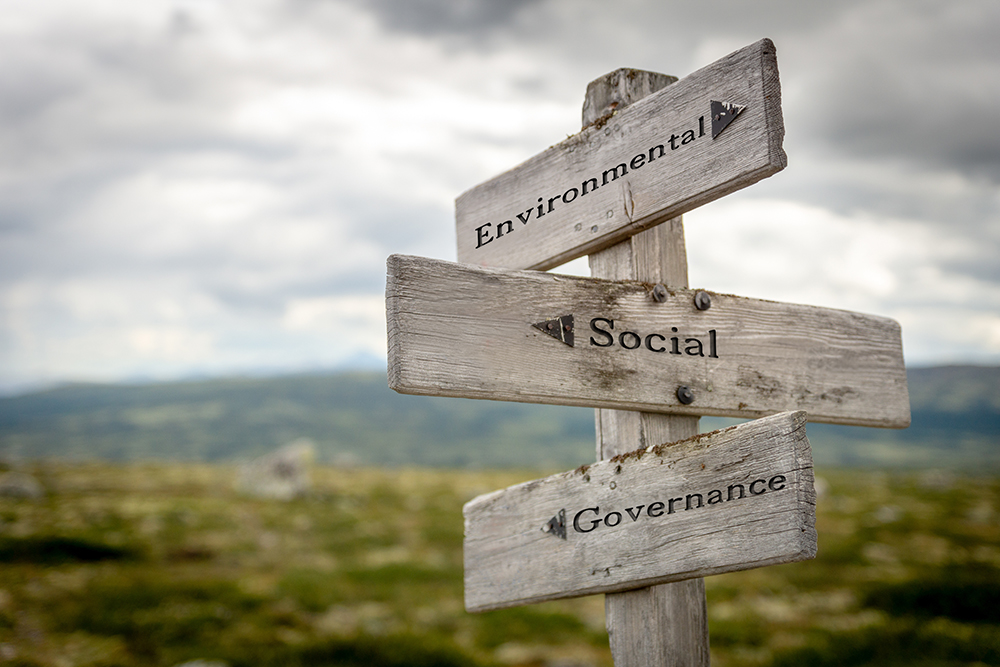The ESG terms Environmental, Social and Governance are top of mind for individuals and companies around the globe now, especially after COP26. Whether you work for a Fortune 500 business or are looking to start a new business, successful business strategies will involve some element of ESG. With that said, our second installment in our focus on the key concepts of ESG is Social.
In 2022 many investors, regulators, and stakeholders are paying increasing attention to social issues; we will see as this all unfolds that Environment and Social are closely tied, as all three will undoubtedly be. The Social component of ESG may not be getting as much play as the other factors at this time, but as Environmental and Governance continue to evolve it will assuredly become more prominent.
Sustainable Fitch recently addressed several key points regarding this issue. They note that investors, regulators and stakeholders are paying increased attention to social issues and they expect this to increase this year, below are their key points:
- Placing greater emphasis on just transition and the investment strategies, through supply chain evaluations for instance, or the issuance of sustainability bonds that include social and environmental goals.
- They expect to see an increase in the issuance of sustainability and sustainability-linked debt as investors combine climate and social objectives under single mandates.
- That the release of the EU’s (draft) Social Taxonomy this year will reflect an increasing demand to consider the ‘S’ in ESG integration and evaluation.
- At the core of the social and environmental connection is the issue of financing a fair transition to a low-carbon economy for populations most at risk from adverse socioeconomic impacts.
- Of importance this year will be new ESG disclosures that will affect market participants and jurisdictions, and that will bring consistency and harmonization.
One sector that could be directly influenced is the building sector. According to GlobeSt.com, investors are rethinking sustainability in their bids for new properties, with factors like improving resilience, reducing carbon emissions and enhancing employee well-being top of mind, citing a new report from JLL.
Lori Mabardi, ESG research director at JLL, noted that more and more owners are assessing the direct impact of climate change on their portfolios early and modeling future risk saying, “We’ve seen extreme weather grow four-fold in the past four decades in the U.S. alone. Real estate investors, landlords and occupiers are increasingly understanding that resilience needs to come into the equation. This could mean taking measures to address areas of weakness in the asset itself, or taking a portfolio view and evaluating exposure to a number of risks like wildfire or drought.” Additionally “not all green certifications equate to a long-term low carbon footprint – some are more focused on initial sustainable design than ongoing operations – and taking this into consideration will reset the value conversation.”
And there is the tie-in with Social, as it affects tenants and occupants of the buildings. Promoting the health of tenants should also be top of mind, JLL experts say, citing Allen and McComber research that shows that in the U.S. alone, the savings from an improved indoor air environment are between $25 billion to $150 billion a year. Effective rents for healthy buildings in the U.S. also command between 4.4% and 7.7% more rent per square foot than their peers that are not WELL or FITWEL certified, according to MIT research.
Whether it’s health & wellbeing, climate risk or social impact, the future value of the building industry could depend on these elements.
Others are focused on the ‘people’ aspect directly; Global Banking and Finance Review’s recent article talks more about that. They feel that the effects from the pandemic will continue to bring social issues to the forefront, will keep it dominant and that significant societal shifts caused by the pandemic are still leading companies to re-evaluate their social impact on employees and communities. The article states, that along with internal issues, businesses are increasingly encouraged to ‘give back’ to society, and help to shape and support their local communities.
The acceleration of the ESG agenda is a reason for great optimism at the start of this new year, with last year’s aspirations becoming this year’s strategy for many businesses around the globe. The ESG revolution involves a recognition that a corporation’s value, reputation, and prospects depend on how it approaches critical ESG issues that matter to investors, customers, employees, lenders, regulators and the whole.
As companies delve into ESG and its individual pieces, they will start to realize how it will affect their employees and business strategies. The sooner that businesses begin to plan for the integration of ESG compliance and mandates they will realize the importance of utilizing weather data as it relates to physical and climate risk.
Weather Source’s Climate Risk Enterprise Group, built in partnership with our parent company Pelmorex Corp./The Weather Network will be a key advisor to companies across the globe to provide climate risk intelligence on weather-related matters as they relate to future mandates and compliance issues including climate trends and how they may affect businesses.
Whether you are just starting to think about this in your business or have already begun to plan, talk to Weather Source about how our team can make sure you are on the right course.



